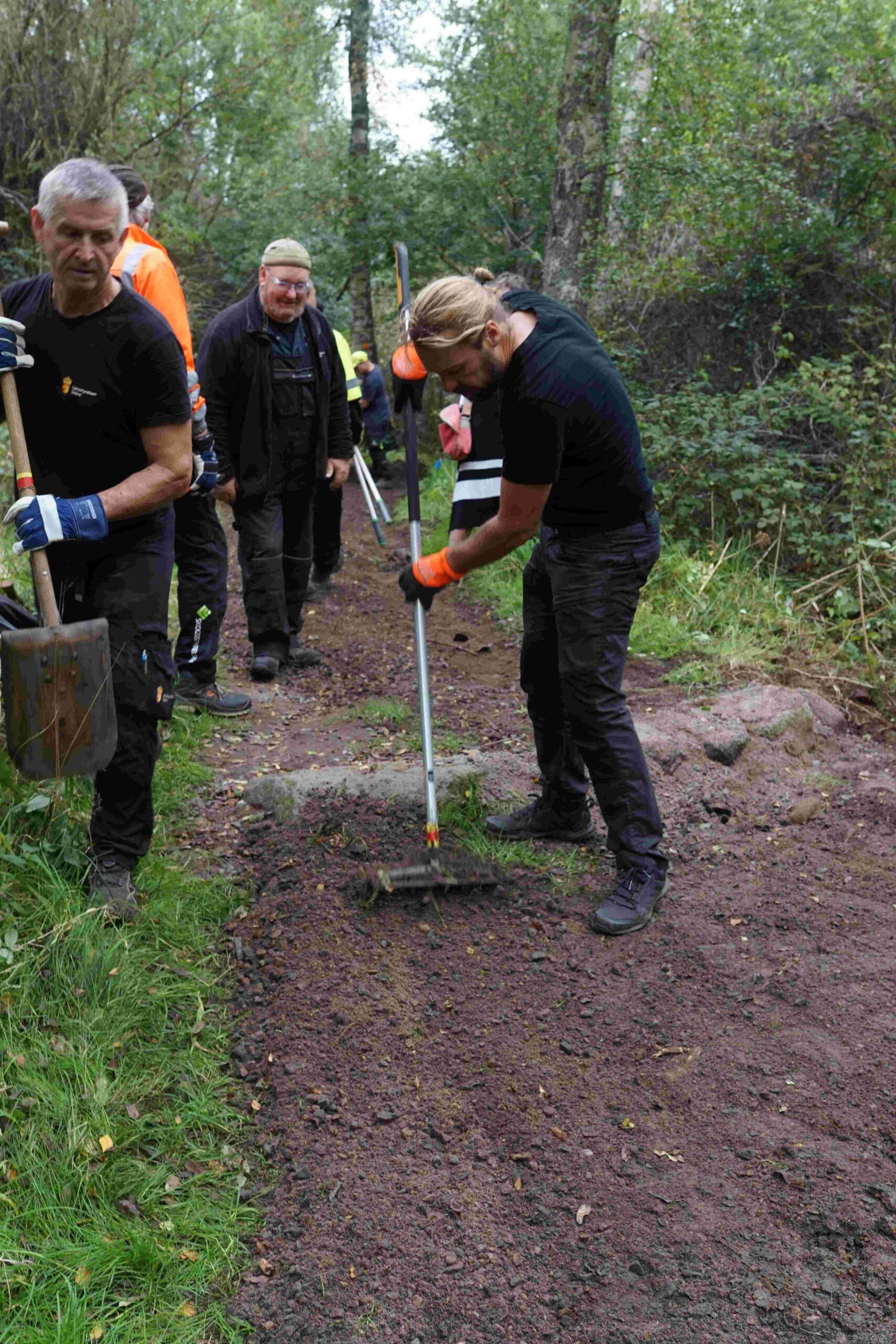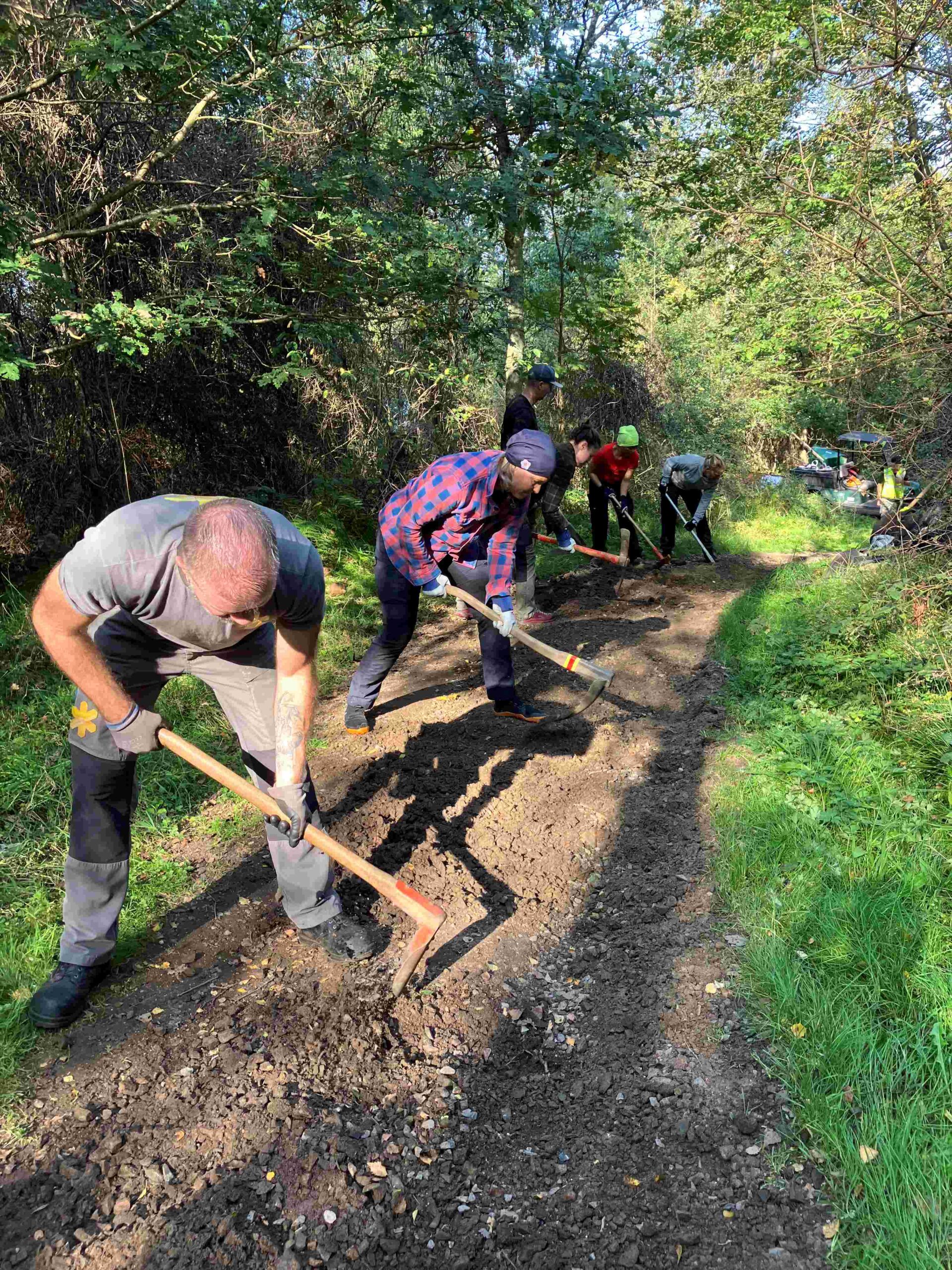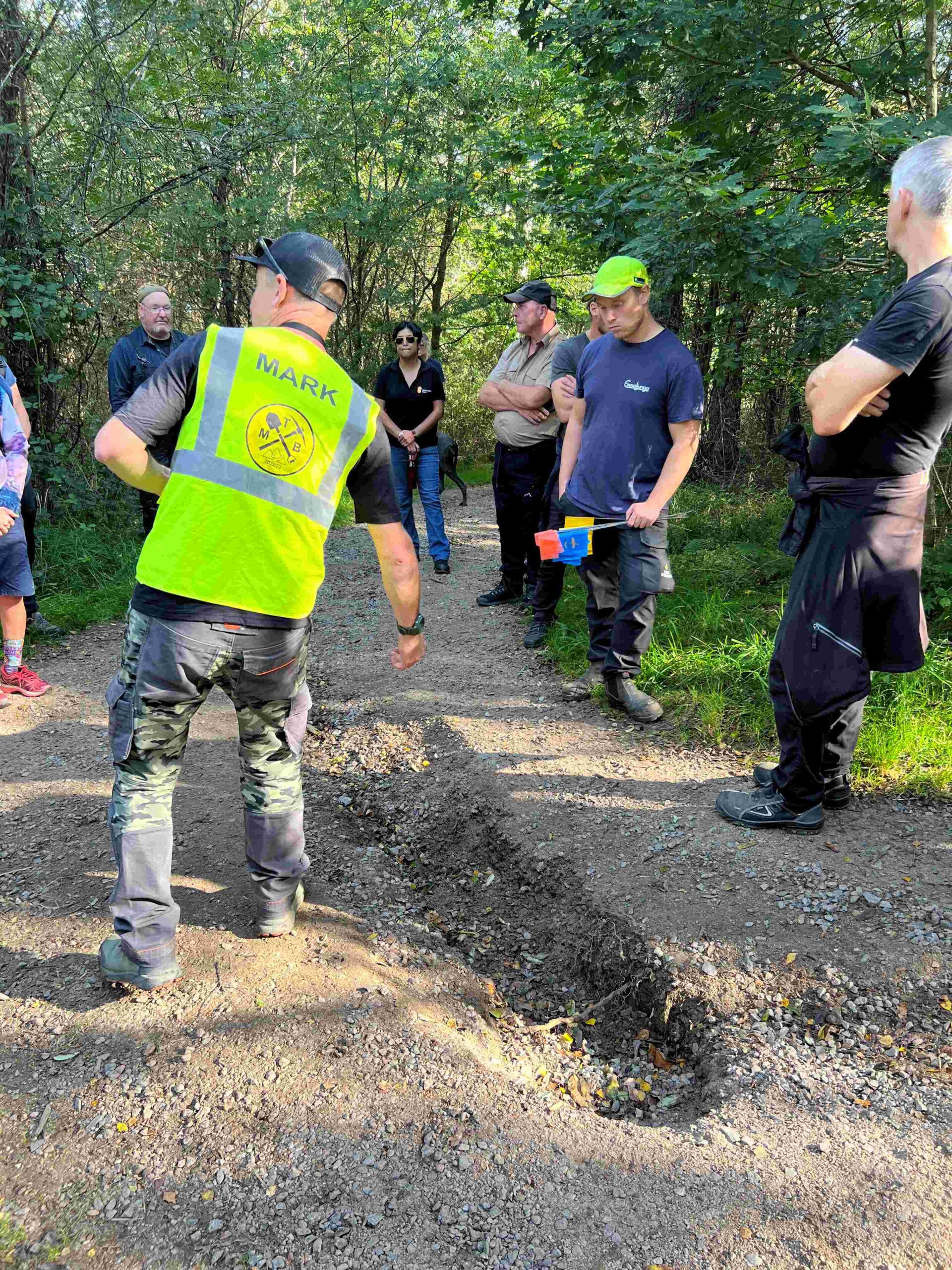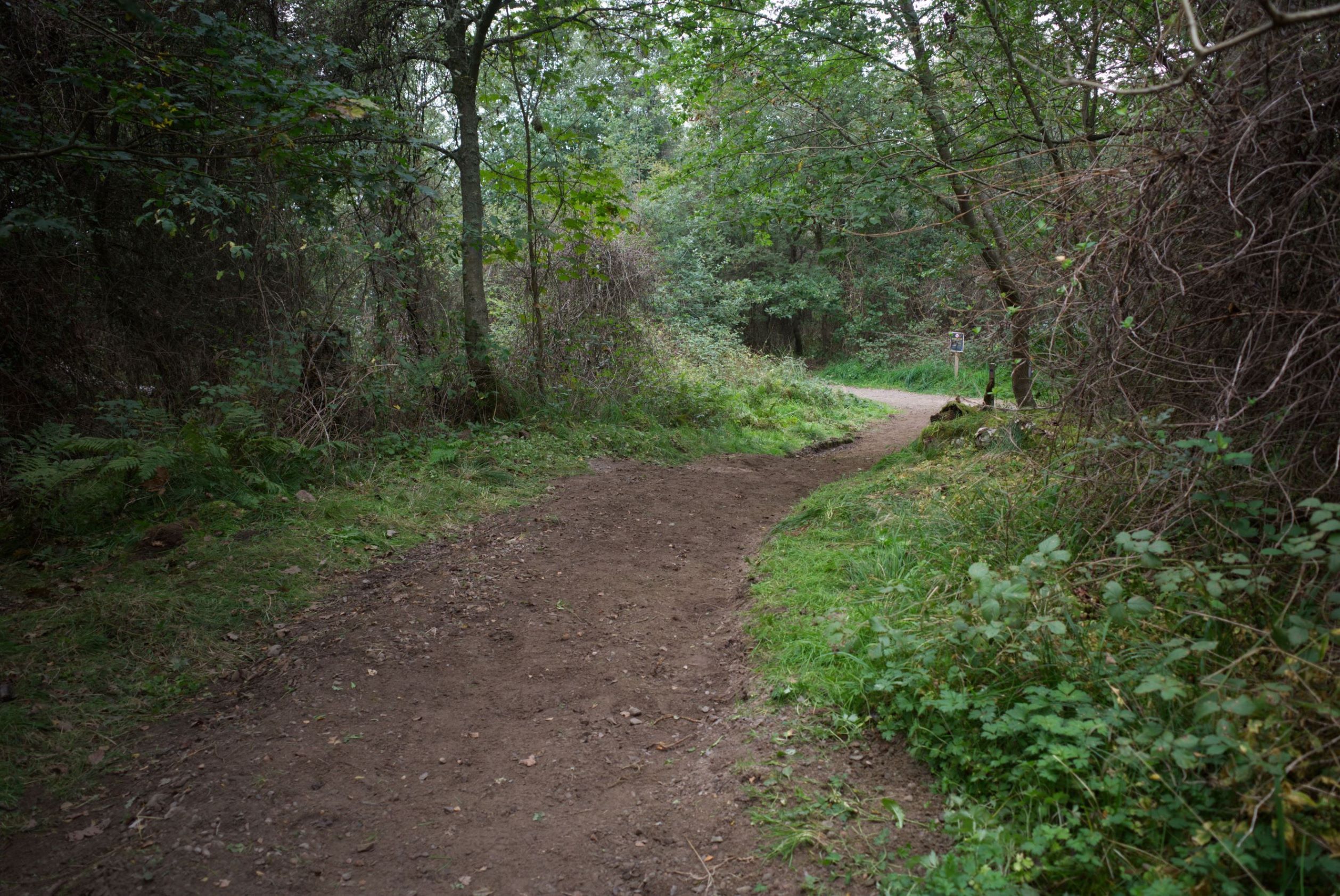Case Study
Collaborative Trail Building School to promote and develop sustainable and safer trails in Scania, Sweden.
Contact name
Jimena Castillo
Institution name
County Administrative Board of Scania / Kullaberg Nature Reserve
Region & country
Scania, Sweden
Summary
Kullaberg Nature Reserve, Cykelfrämjandet which is the Swedish national cycling advocacy organization and the International Mountain Bicycling Association Europe collaborate to train 30 representatives of different organizations in a trail building school.
The participants had the opportunity to practice different methods of how to build sustainable and safer trails, as well as hold discussions about how to read the landscape and plan for the best alignment of trails. The techniques IMBA promotes are applicable on recreational trails suitable for all types of users in a variety of terrains and conditions. Sustainable trails can ensure that even many visitors can enjoy ecologically sensitive areas without causing undue erosion or damage.

Trail Restoration Session
Hans Stoops

Trail Restoration Session
Jimena Castillo

Trail Restoration Session
Helena Pettersson

Repaired Trail
Hans Stoops
Background of the project
After the heavy rains of August 2023, an inventory of the damages in the trails was made. The trails that were affected have a bad design and were not really planned to drain water. Despite different carrying capacity studies the management office personnel lacked the skills necessary for ensuring the sustainability of restorations or future trail construction. To manage the visitors in a sustainable way, some trails need to be rebuilt to prevent the risk of damage and erosion.
The immediate need after the storm was to restore the trails to allow for their continued use by visitors. The management office saw the need to better equip their staff and crew with knowledge and skills to build trails in a sustainable manner that will require less maintenance and will provide visitors with a more enjoyable and safe nature experience. Representatives of other organisations facing similar problems with trails management also benefited from the trail building school.
Solution and actions taken
A two-day trail building school was arranged with the support of Cykelfrämjandet and IMBA Europe. These organisations have years of experience educating, building, and promoting knowledge about sustainable trail building practices. While IMBA is a mountain bike organisation, the techniques and strategies promoted by IMBA are applicable to trails suitable for all types of recreation. IMBA advocates planning and developing trail infrastructure based on the specific needs and terrain of a site.
The participants were able to learn sustainable trail building practices. The first day consists of theory education, split between an indoor classroom setting and in the field. The second day is more practical in nature, where participants practice the lessons of the first day by building or repairing existing trails.
After the TBS the management office team has been implementing the acquired knowledge, after two months more than 400 meters of the damaged trails had been restored.
Other institutions or parties involved
IMBA Europe led the course with the support of the national member organisation Cykelfrämjandet. The TBS is aimed at trail managers, landowners, associations, companies, consultants, and local people who are involved in the work with the trails in Scania. The course was attended by staff of the County Administrative Board, specifically personnel working in protected areas, Region Scania, the Scanian Landscape Foundation and by The Swedish Forestry Agency and their forestry work training program.
Results
The participants are now better equipped to handle difficult erosion situations in the future.The trail building school is part of the project “Sustainable and safer trails in the Kullen Peninsula” which is financed by the rural development program through the Swedish Development Agency. During the fall and spring, we will improve hiking and cycling trails in the reserves in the Höganäs municipality.
Challenges
Sustainable trail design and construction is difficult to achieve on legacy routes which exhibit fundamentally unsustainable properties. To ensure that a trail meets the needs of the visitors without causing environmental degradation due to erosion or disturbance it is preferable to plan and design a trail specifically for the needs of the users and the environment. The interventions undertaken during the TBS are probably temporary improvements.
Lessons learned
Appropriate trail planning and design is critical to the long-term sustainability of a trail. Strategies and techniques exist which permit users to visit natural areas with minimal ecological impact, but they require a holistic approach which considers the needs of the ecological values of the site and the management of the park, the concerns of the surrounding community and the desires of visitors.
Contact name
Jimena Castillo
Institution name
County Administrative Board of Scania / Kullaberg Nature Reserve
Website(s)
